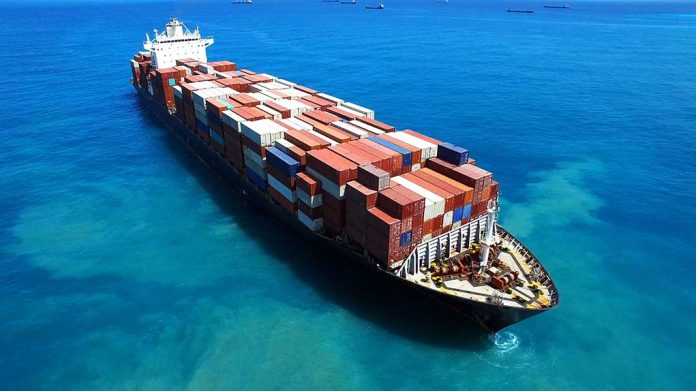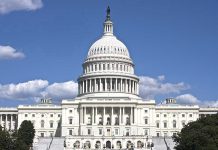
President Trump signs tariffs on Canada, Mexico, and China, citing national security concerns and sparking retaliatory measures.
Key Takeaways
- President Trump imposed 25% tariffs on imports from Canada and Mexico, and 10% on China, citing illegal immigration and drug trafficking concerns.
- Canada and Mexico announced retaliatory tariffs on U.S. goods in response to Trump’s action.
- The tariffs aim to combat illegal immigration and drug trafficking, particularly the flow of fentanyl into the U.S.
- Critics warn of potential negative impacts on U.S. jobs and consumer costs.
- The move could lead to escalating trade conflicts and broader economic repercussions across multiple sectors.
Trump’s Tariff Decision and Its Rationale
President Donald J. Trump has taken a bold step in international trade relations by imposing significant tariffs on imports from Canada, Mexico, and China. The President signed an order implementing a 25% tariff on imports from Canada and Mexico, while imposing a 10% tariff on Chinese goods. This decision comes as part of Trump’s strategy to address what he considers national security concerns, particularly illegal immigration and drug trafficking.
The White House justifies these measures by pointing to the flow of contraband drugs, especially fentanyl, into the United States, which it deems a national emergency and public health crisis. The administration accuses Mexican drug trafficking organizations of having alliances with the Mexican government and claims there’s a growing presence of Mexican cartels operating drug synthesis labs in Canada.
Jaime Dimon of $JPM on the question of whether tariffs will cause inflation: "I mean, get over it. National security trumps a little bit more inflation." pic.twitter.com/IjS55Ldpqn
— unusual_whales (@unusual_whales) February 2, 2025
Economic Implications and Trade Dynamics
The implementation of these tariffs is expected to have far-reaching consequences on global trade dynamics. The U.S. trade deficit in goods exceeded $1 trillion in 2023, a figure that the Trump administration aims to address through these protective measures. While trade accounts for a significant portion of the GDP of Canada, Mexico, and China, it only represents 24% of U.S. GDP, potentially giving the U.S. more leverage in these trade disputes.
However, critics argue that these tariffs could have unintended consequences for American consumers and businesses. The potential for increased costs on imported goods and retaliatory measures from affected countries could lead to higher prices for U.S. consumers and job losses in industries dependent on international trade.
International Response and Retaliation
The international response to Trump’s tariffs has been swift and decisive. Canada, under Prime Minister Justin Trudeau, announced retaliatory tariffs of 25% on U.S. imports, affecting C$155 billion ($107 billion) worth of American goods. These counter-tariffs will target products such as beer, wine, bourbon, fruits, clothing, and household appliances.
“Tariffs against Canada will put your jobs at risk, potentially shutting down American auto assembly plants and other manufacturing facilities,” said Trudeau.
Similarly, Mexican President Claudia Sheinbaum has ordered retaliatory measures, including tariffs ranging from 5% to 20% on U.S. imports like pork, cheese, fresh produce, and steel. The auto industry is initially exempt from these Mexican counter-tariffs. Both Canada and Mexico have criticized the U.S. tariffs as a violation of existing trade agreements and warned of potential economic consequences for all parties involved.
Potential Economic Impact
The economic ramifications of these tariffs could be significant. Analysts suggest that a 25% universal tariff could lead to a 12% drop in Mexican exports and a 4% decrease in Mexico’s GDP by the end of 2025. The impact on Canada’s economy is also expected to be substantial, given the close trade ties between the two nations.
As the situation continues to develop, businesses and consumers on both sides of the borders are bracing for potential disruptions in supply chains and increases in costs. The long-term effects of these tariffs on global trade relationships and economic growth remain to be seen, but many experts warn of the potential for escalating trade conflicts and broader economic repercussions across multiple sectors.









